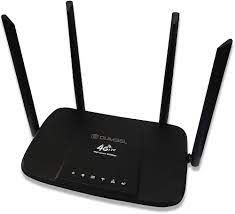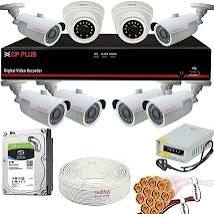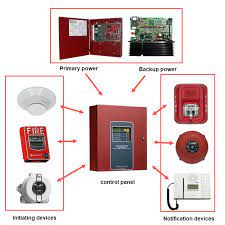Wireless Wi-Fi: Revolutionizing Connectivity
In today’s digital age, staying connected is more important than ever. Whether it’s for work, education, or leisure, having a reliable and fast internet connection has become a necessity. One technology that has revolutionized connectivity is wireless Wi-Fi.
Wireless Wi-Fi, also known as wireless local area network (WLAN), allows devices to connect to the internet without the need for physical cables. It provides users with the freedom to access the internet from anywhere within the range of a Wi-Fi network. From homes to offices, cafes to airports, Wi-Fi has become ubiquitous in our daily lives.
One of the key advantages of wireless Wi-Fi is its convenience. Gone are the days when we had to be tethered to a desk or limited by the length of an Ethernet cable. With Wi-Fi, we can now move around freely while staying connected. Whether we’re working on our laptops in a coffee shop or streaming videos on our smartphones at home, Wi-Fi enables seamless connectivity without restrictions.
Another significant benefit of wireless Wi-Fi is its scalability. Unlike wired connections that require physical infrastructure installations and complex cabling systems, setting up a Wi-Fi network is relatively simple and cost-effective. It allows for easy expansion and flexibility as new devices can be added effortlessly without the need for additional wiring.
Moreover, wireless Wi-Fi offers high-speed internet access that rivals traditional wired connections. With advancements in technology such as 5G and Wi-Fi 6 (802.11ax), users can experience faster download and upload speeds, smoother streaming experiences, and better overall performance. This makes it ideal for bandwidth-intensive activities like video conferencing, online gaming, and streaming high-definition content.
Wi-Fi networks also foster collaboration and connectivity in shared spaces like offices or educational institutions. Multiple users can simultaneously connect their devices to a single network, allowing for seamless communication and file sharing. This promotes productivity and enhances the overall user experience.
However, it’s important to note that wireless Wi-Fi networks can face challenges such as signal interference, security concerns, and limited range. To mitigate these issues, proper network planning, robust security measures, and the use of signal boosters or range extenders can help ensure a reliable and secure connection.
As technology continues to advance, so does wireless Wi-Fi. The introduction of Wi-Fi 6E promises even faster speeds and reduced congestion by utilizing additional frequency bands. This will further enhance the user experience and enable new applications that require higher bandwidth.
In conclusion, wireless Wi-Fi has transformed the way we connect to the internet. Its convenience, scalability, and high-speed capabilities have made it an essential technology in our modern world. As we continue to rely on connectivity for various aspects of our lives, wireless Wi-Fi will undoubtedly play a vital role in keeping us connected anytime, anywhere.
Frequently Asked Questions About Wireless Wi-Fi
- Is Airtel Wi-Fi wireless?
- How can I get wireless Wi-Fi?
- What are the 3 types of Wi-Fi?
- What is wireless Wi-Fi?
Is Airtel Wi-Fi wireless?
Yes, Airtel Wi-Fi is a wireless internet service provided by Airtel, one of the leading telecommunications companies in India. Airtel Wi-Fi allows users to connect to the internet wirelessly using Wi-Fi technology. This enables users to access the internet on their devices without the need for physical cables, providing them with the convenience and flexibility of wireless connectivity. Airtel Wi-Fi is available in various locations such as homes, offices, cafes, and public spaces, allowing users to stay connected on the go.
How can I get wireless Wi-Fi?
Getting wireless Wi-Fi is relatively straightforward. Here are the steps you can follow to set up a wireless Wi-Fi network:
- Choose an Internet Service Provider (ISP): Select an ISP that offers internet connectivity in your area. Research different providers and compare their plans, prices, and customer reviews to find the one that best suits your needs.
- Select a Wi-Fi Router: Once you have subscribed to an internet plan, you will need a Wi-Fi router to create a wireless network in your home or office. Look for a router that supports the latest Wi-Fi standards (such as Wi-Fi 6 or 802.11ax) for optimal performance.
- Connect the Router: Follow the instructions provided by your ISP or router manufacturer to connect the router to your modem or broadband connection. This typically involves connecting one end of an Ethernet cable from the modem to the router’s WAN (Wide Area Network) port.
- Configure Router Settings: Access the router’s settings by entering its IP address in a web browser. The IP address and login credentials are usually mentioned in the router’s manual or on its label. From there, you can set up a network name (SSID) and password for security purposes.
- Position the Router: Place the router in a central location within your home or office to ensure optimal signal coverage. Avoid obstructions like walls and metal objects that may interfere with signal strength.
- Connect Devices: Enable Wi-Fi on your devices (laptops, smartphones, tablets, etc.) and search for available networks. Locate your network name (SSID) and enter the password you set during configuration to connect each device wirelessly.
- Secure Your Network: To protect your Wi-Fi network from unauthorized access, it is essential to enable encryption such as WPA2 (Wi-Fi Protected Access 2). This ensures that only authorized users can connect to your network using the correct password.
- Extend Wi-Fi Range (if necessary): If you find that the Wi-Fi signal doesn’t reach all areas of your home or office, consider using range extenders or mesh Wi-Fi systems. These devices can amplify and extend the coverage of your wireless network.
Remember to periodically update your router’s firmware to ensure you have the latest security patches and performance enhancements.
If you encounter any difficulties during the setup process, consult the router’s manual or contact your ISP’s customer support for assistance. They can guide you through the specific steps based on your equipment and network setup.
What are the 3 types of Wi-Fi?
There are three main types of Wi-Fi networks:
- Wi-Fi 4 (802.11n): This is the fourth generation of Wi-Fi technology and offers a maximum theoretical speed of up to 600 Mbps. It operates on both the 2.4 GHz and 5 GHz frequency bands, providing better range and improved performance compared to previous generations. Wi-Fi 4 is commonly found in older devices and is still widely used today.
- Wi-Fi 5 (802.11ac): Wi-Fi 5 is the fifth generation of Wi-Fi technology and provides faster speeds and better performance than its predecessor. It operates exclusively on the 5 GHz frequency band, offering higher throughput and reduced interference from other devices. With maximum theoretical speeds of up to several gigabits per second, Wi-Fi 5 is commonly found in modern devices such as smartphones, laptops, and routers.
- Wi-Fi 6 (802.11ax): The latest generation of Wi-Fi technology is known as Wi-Fi 6 or AX. It brings significant improvements in speed, capacity, and efficiency compared to previous generations. With support for both the 2.4 GHz and 5 GHz frequency bands, it can handle more simultaneous connections at higher speeds without experiencing congestion issues. Wi-Fi 6 also introduces features like orthogonal frequency division multiple access (OFDMA) for better data transmission efficiency in crowded environments. This technology is gradually being adopted by newer devices to provide faster and more reliable wireless connectivity.
It’s important to note that while devices supporting newer generations of Wi-Fi can take advantage of their respective features, they are still backward compatible with older generations of Wi-Fi networks. This allows them to connect to older routers or access points that support earlier versions of the technology (e.g., a device with Wi-Fi 6 can connect to a router supporting Wi-Fi 4 or Wi-Fi 5).
What is wireless Wi-Fi?
Wireless Wi-Fi, also known as wireless local area network (WLAN), is a technology that enables devices to connect to the internet or communicate with each other without the need for physical cables. It utilizes radio waves to transmit data between devices and a wireless access point, which acts as the central hub for the network.
Wi-Fi networks operate on specific frequency bands, typically 2.4 GHz or 5 GHz, and allow devices such as smartphones, laptops, tablets, smart TVs, and IoT devices to connect wirelessly. These devices have built-in Wi-Fi capabilities or can be equipped with Wi-Fi adapters for connectivity.
To establish a Wi-Fi connection, a device must be within the range of a wireless access point or router that is connected to an internet service provider (ISP). The access point broadcasts signals that devices can detect and connect to using Wi-Fi protocols such as IEEE 802.11a/b/g/n/ac/ax.
Once connected to a Wi-Fi network, devices can access the internet, share files and resources with other connected devices, stream media content, make voice or video calls over IP (VoIP), and perform various online activities.
Wireless Wi-Fi offers several advantages over wired connections. It provides mobility and freedom of movement since users can connect to the internet from anywhere within the range of a Wi-Fi network. It also allows for easy installation and scalability compared to wired networks that require physical infrastructure.
However, it’s important to note that Wi-Fi signals can be affected by factors such as distance from the access point, physical obstructions like walls or furniture, interference from other electronic devices operating on similar frequencies (microwaves, cordless phones), and congestion caused by multiple users connecting simultaneously.
To ensure a reliable and secure wireless connection, it’s recommended to use strong encryption protocols like WPA2 or WPA3 for data privacy and implement security measures such as strong passwords and regular firmware updates on Wi-Fi routers.
Overall, wireless Wi-Fi has become an integral part of our daily lives, providing convenient and flexible internet connectivity for a wide range of devices in homes, offices, public spaces, and educational institutions.




